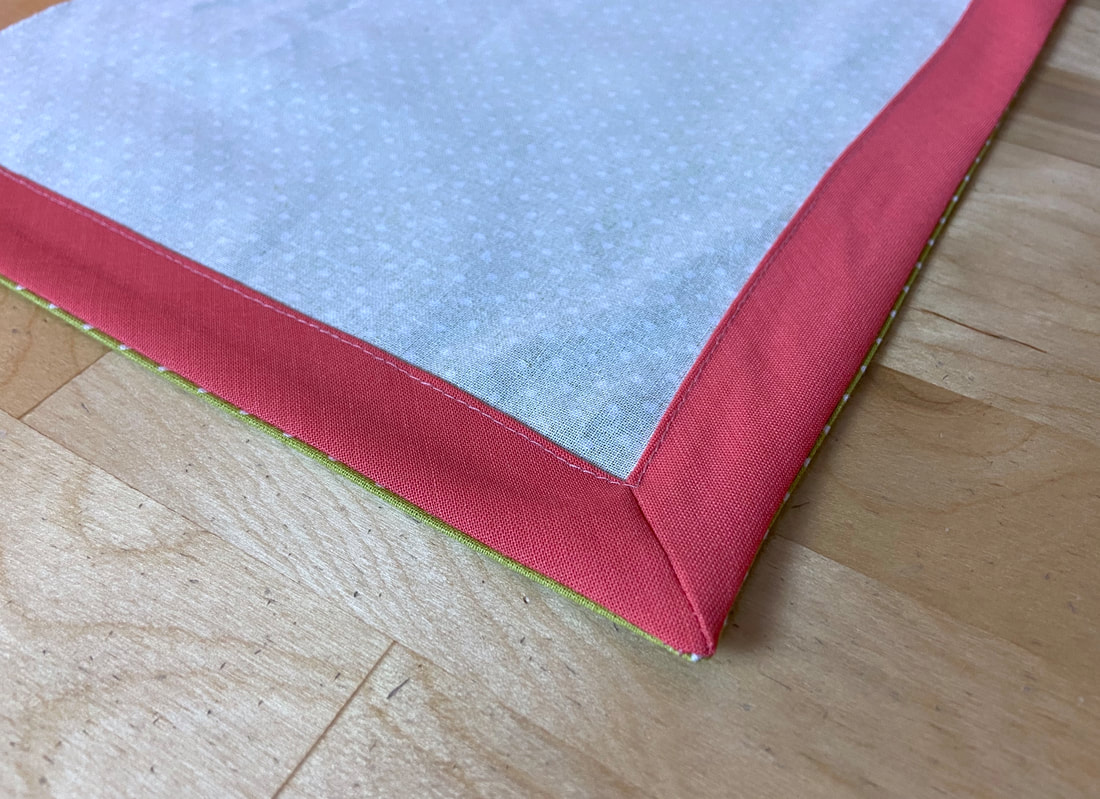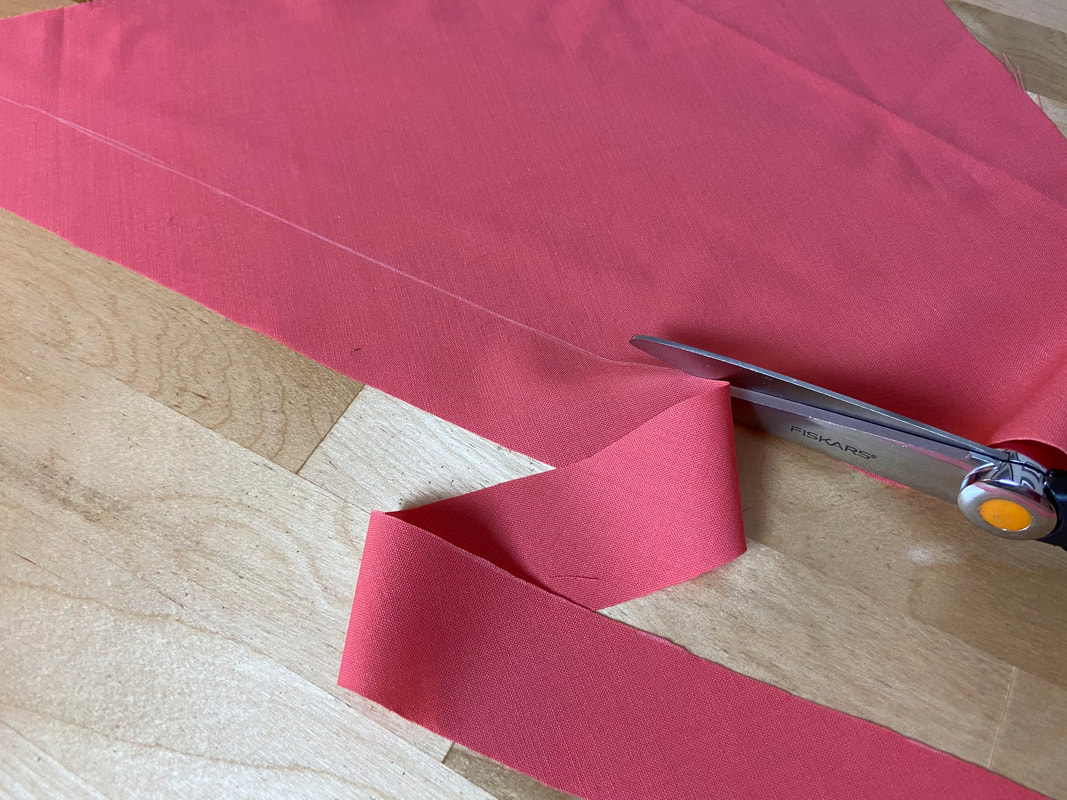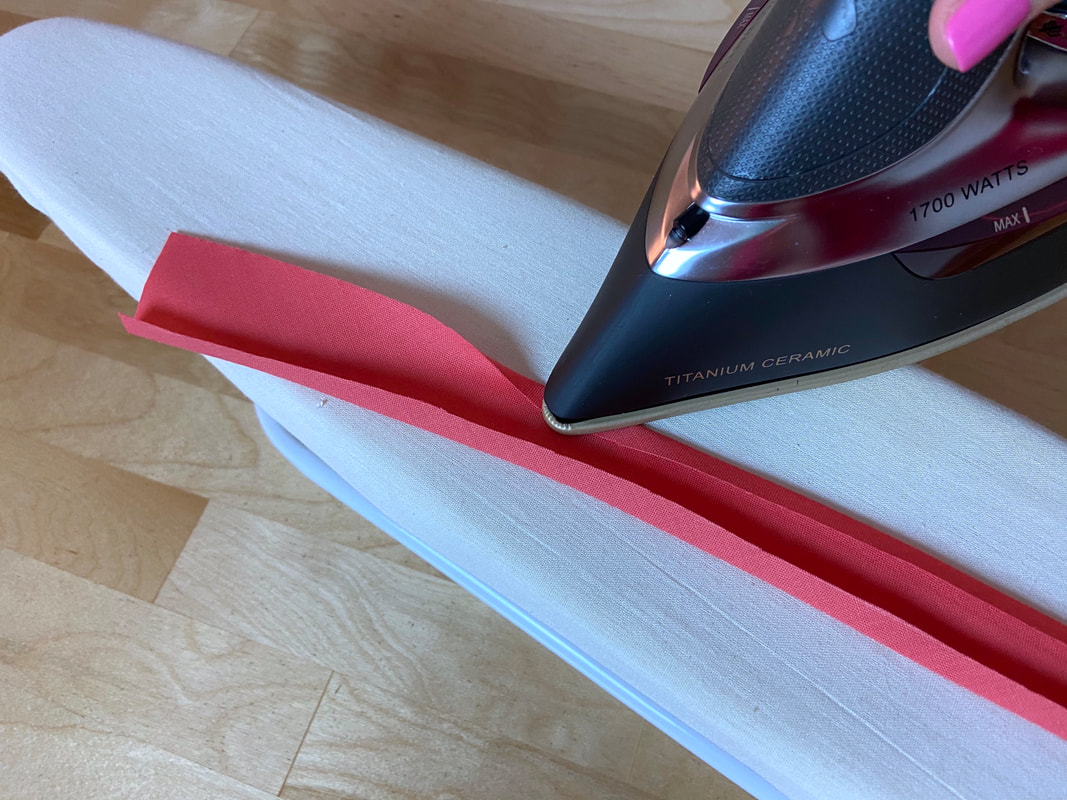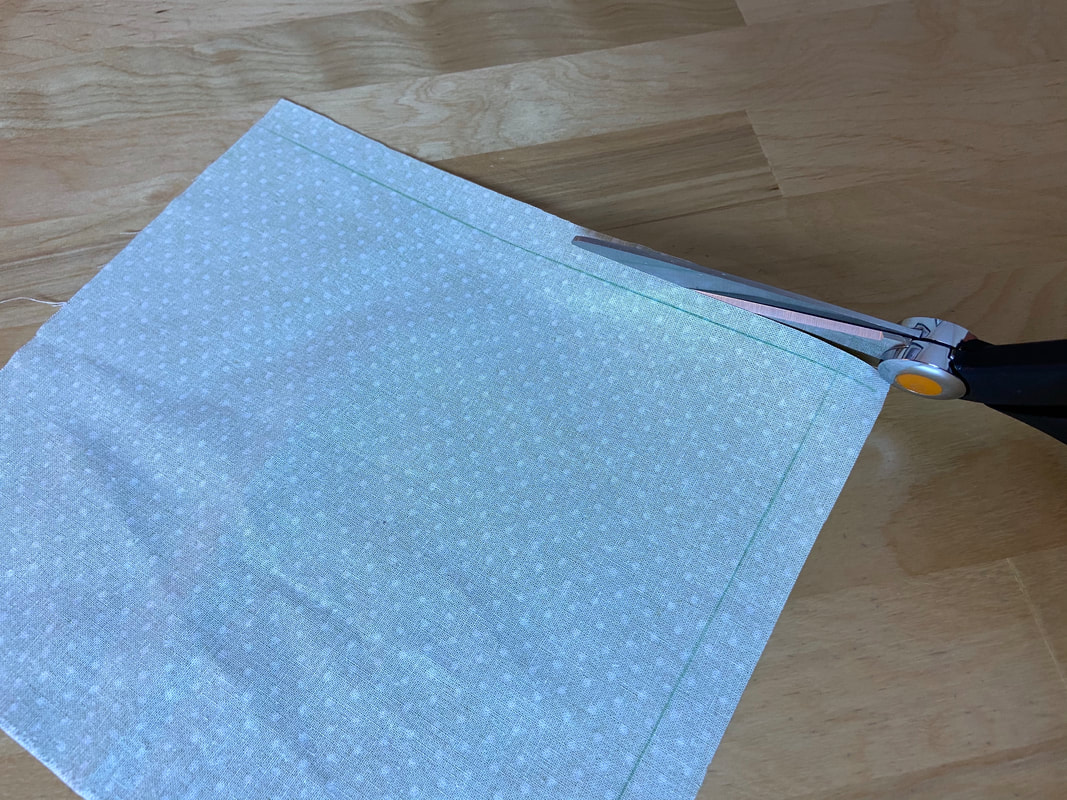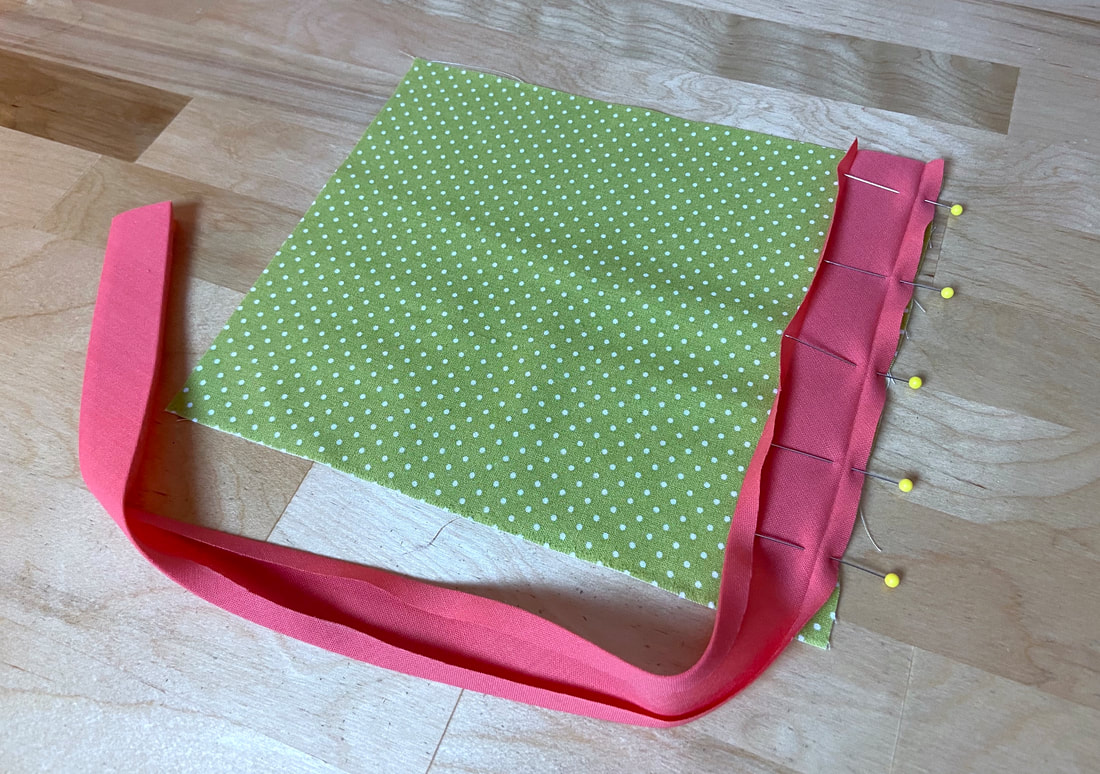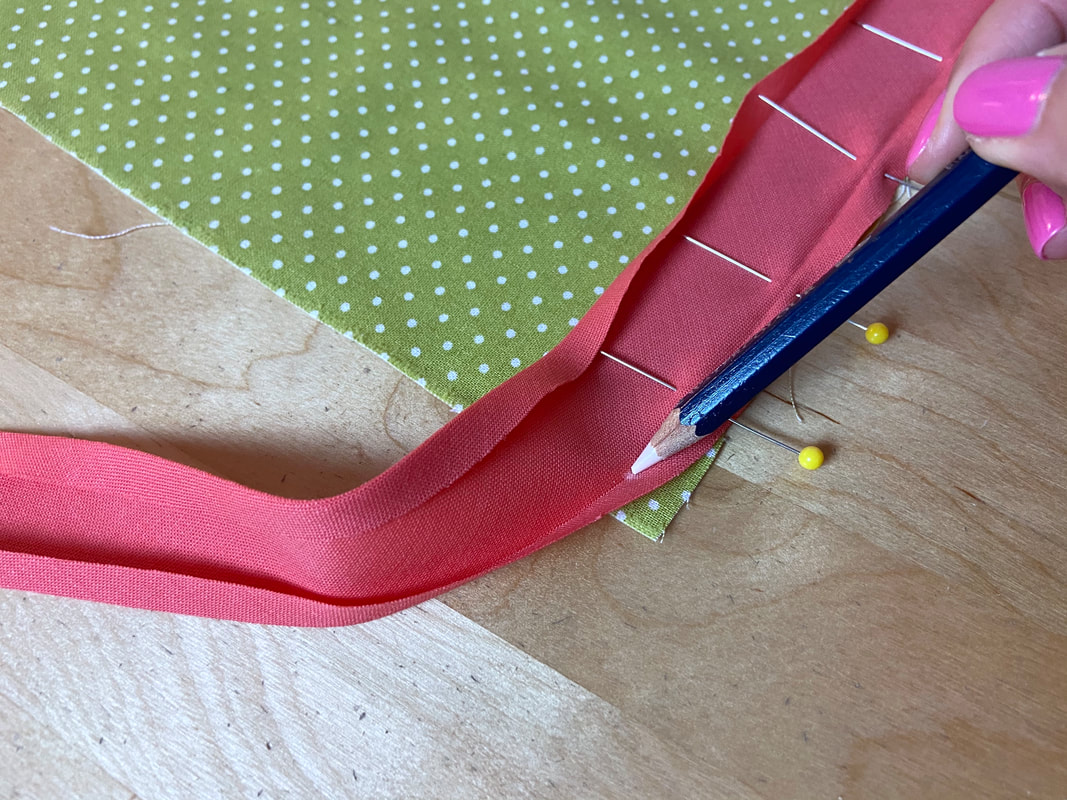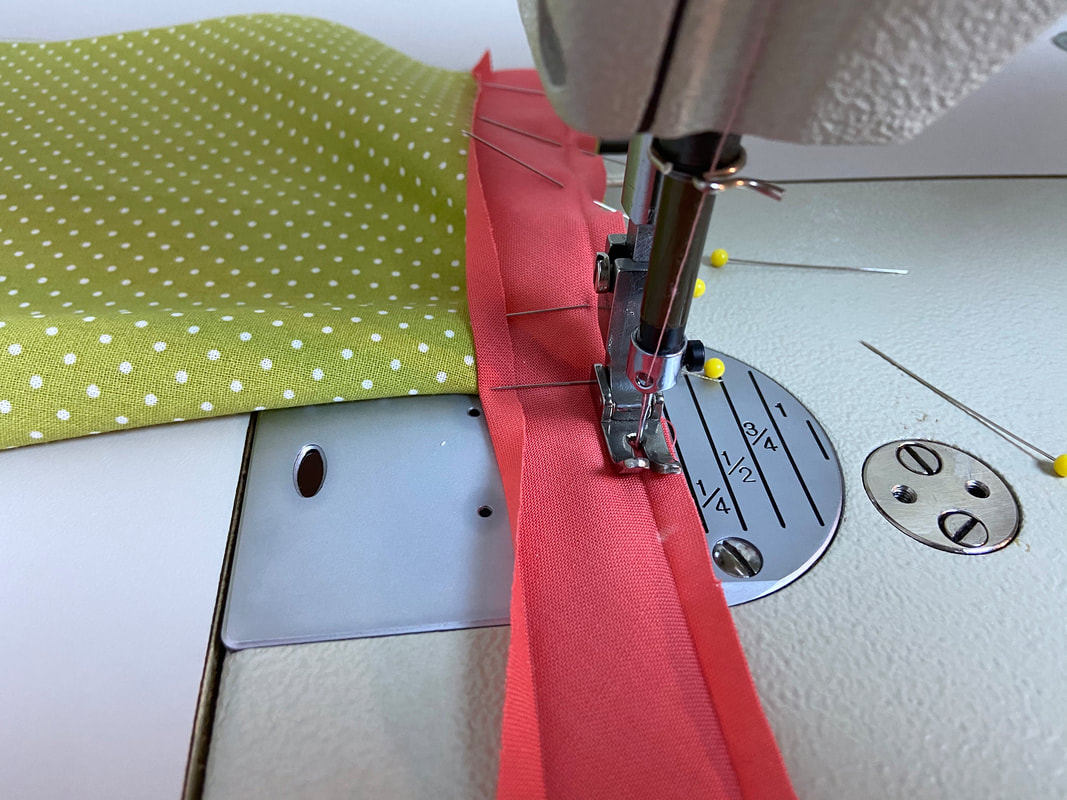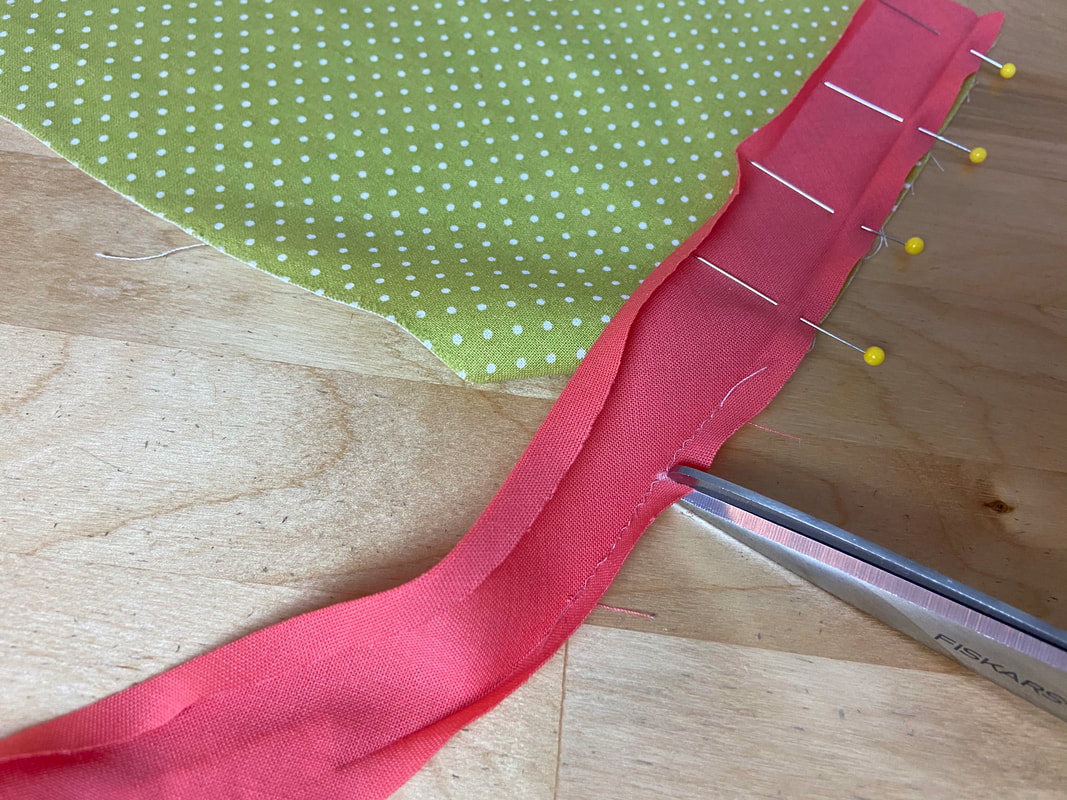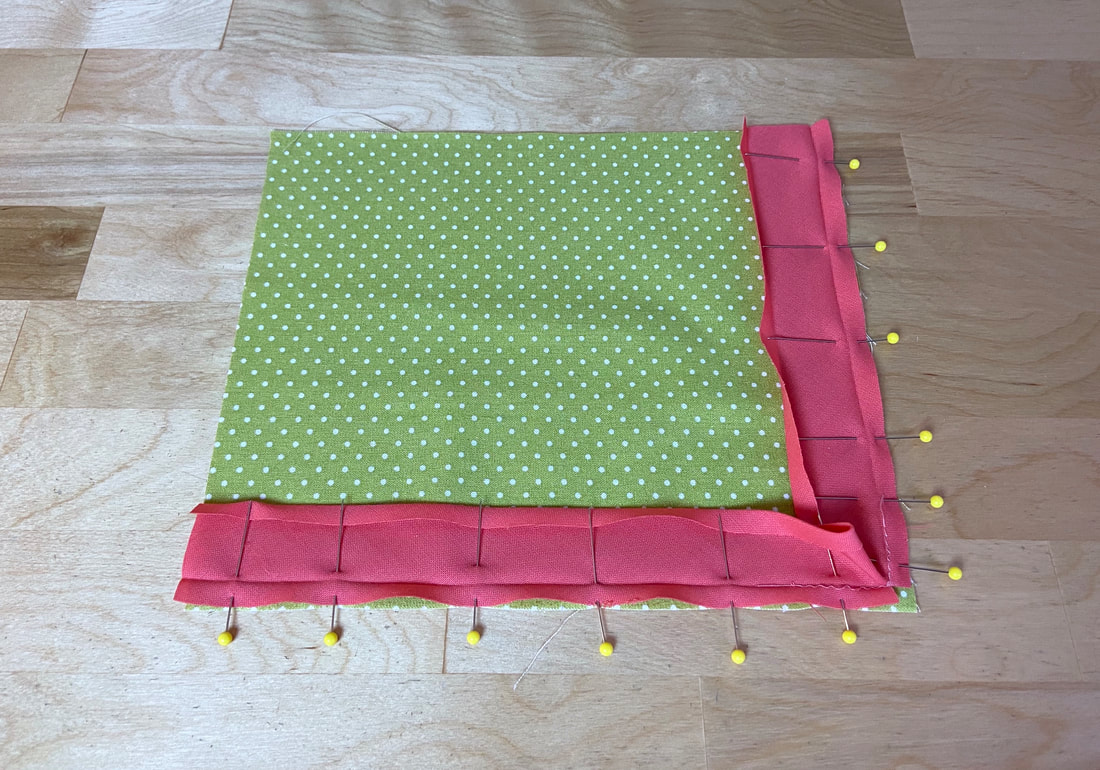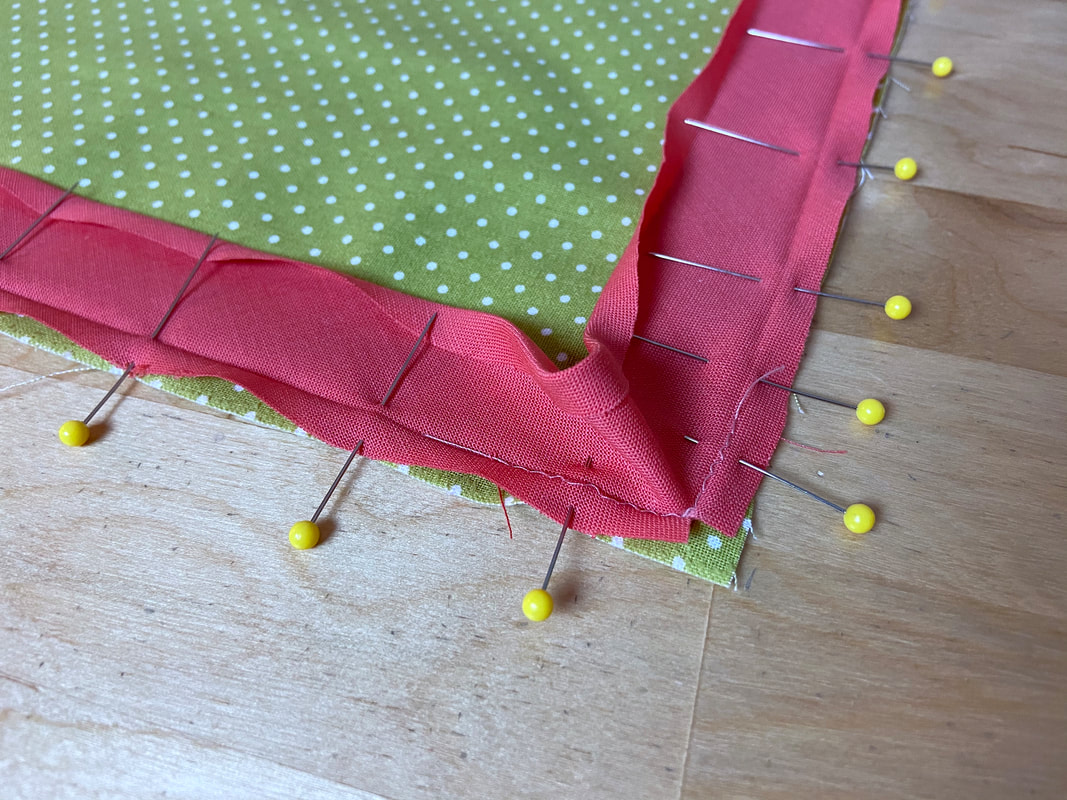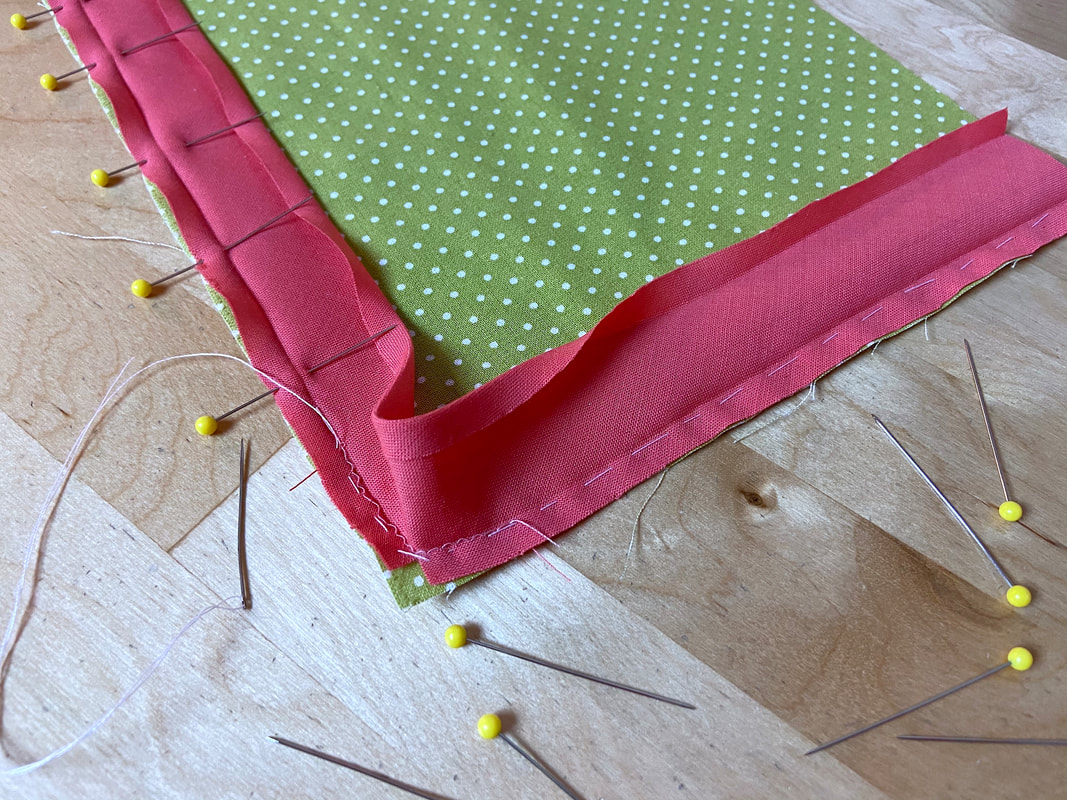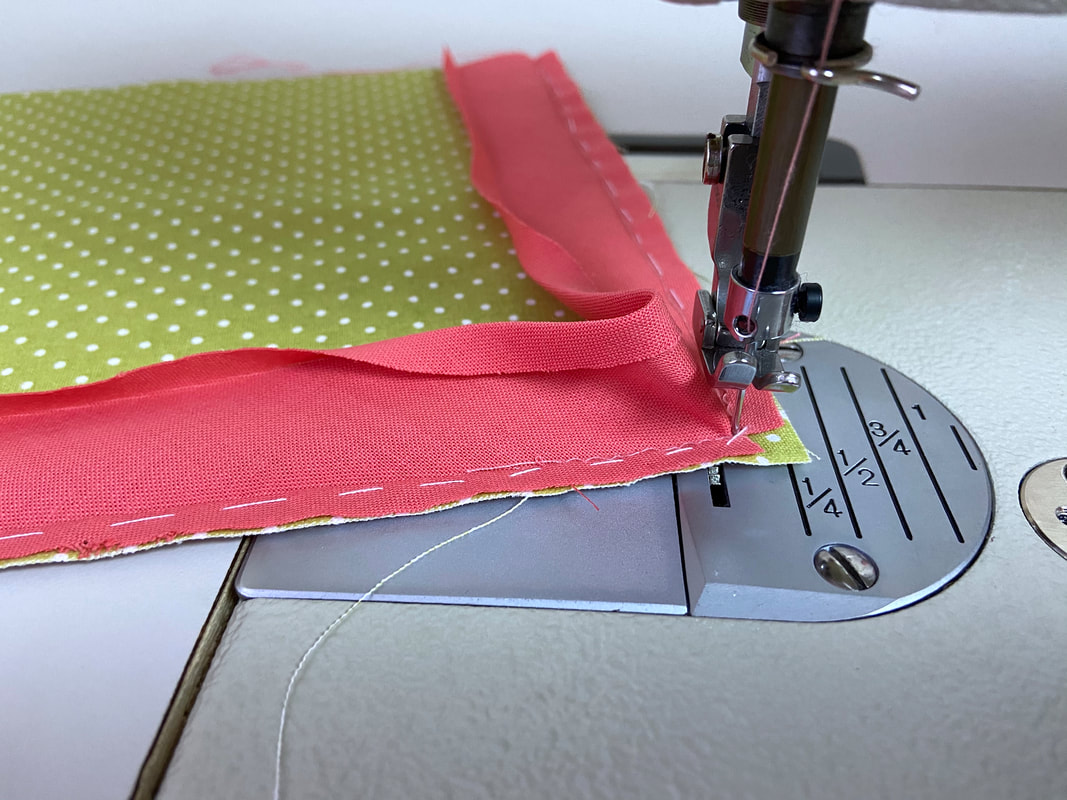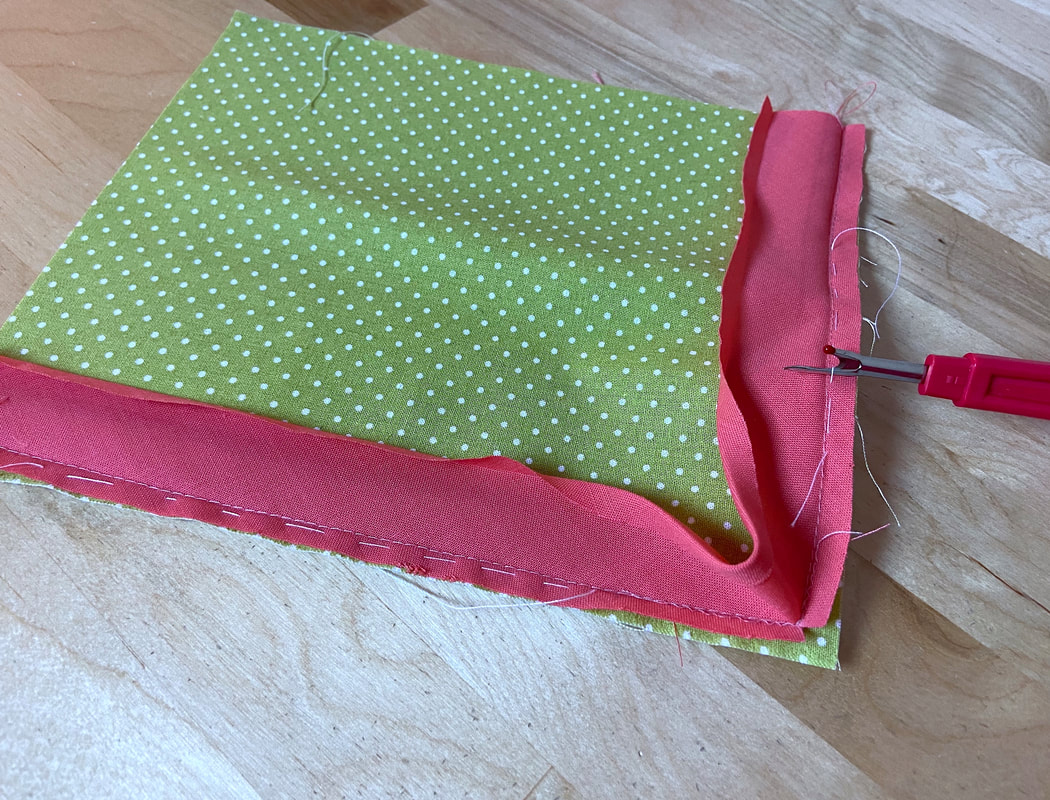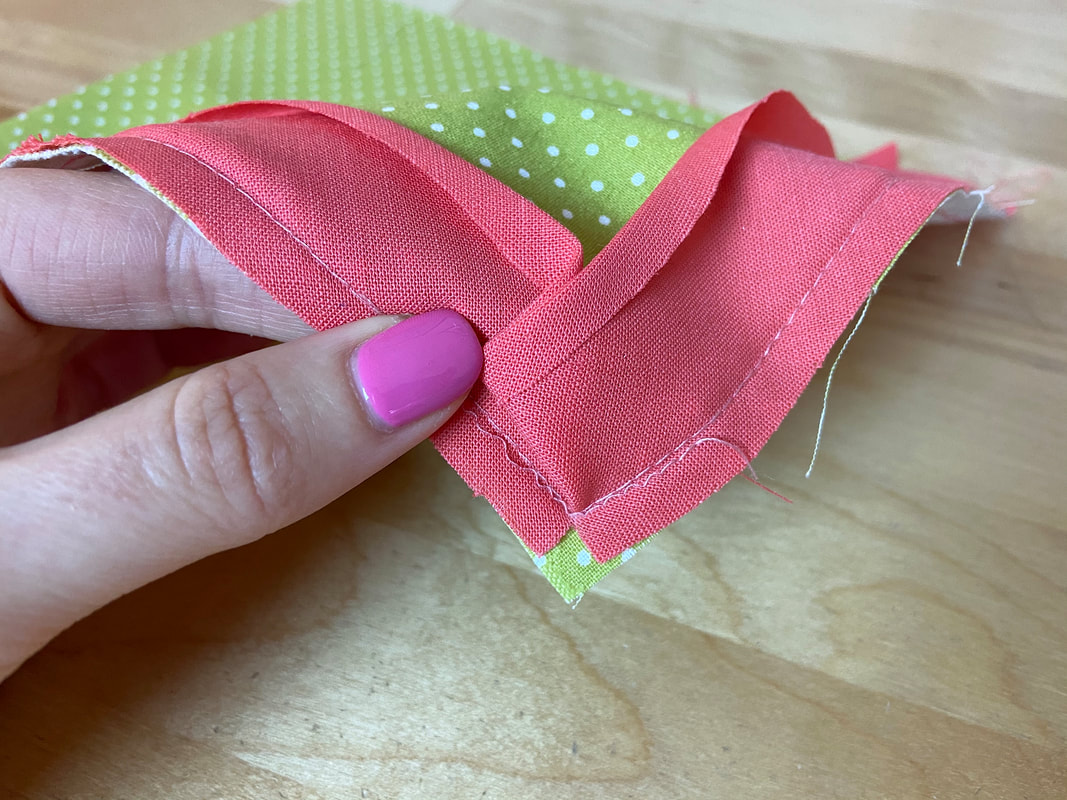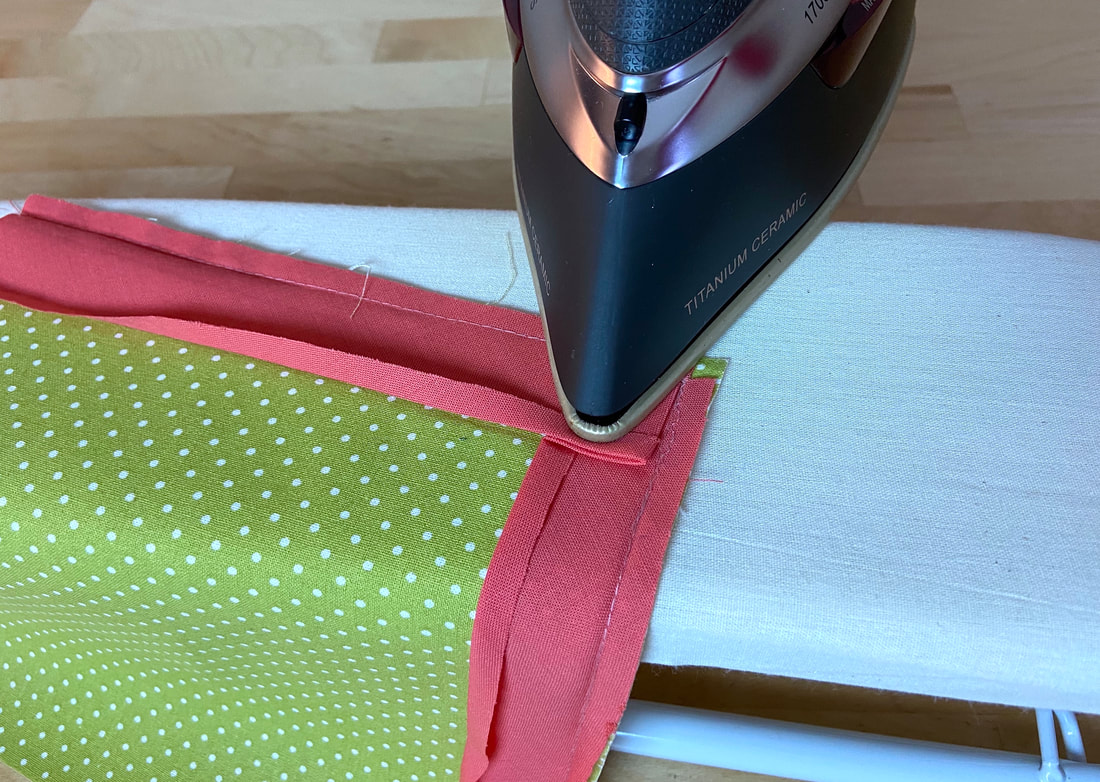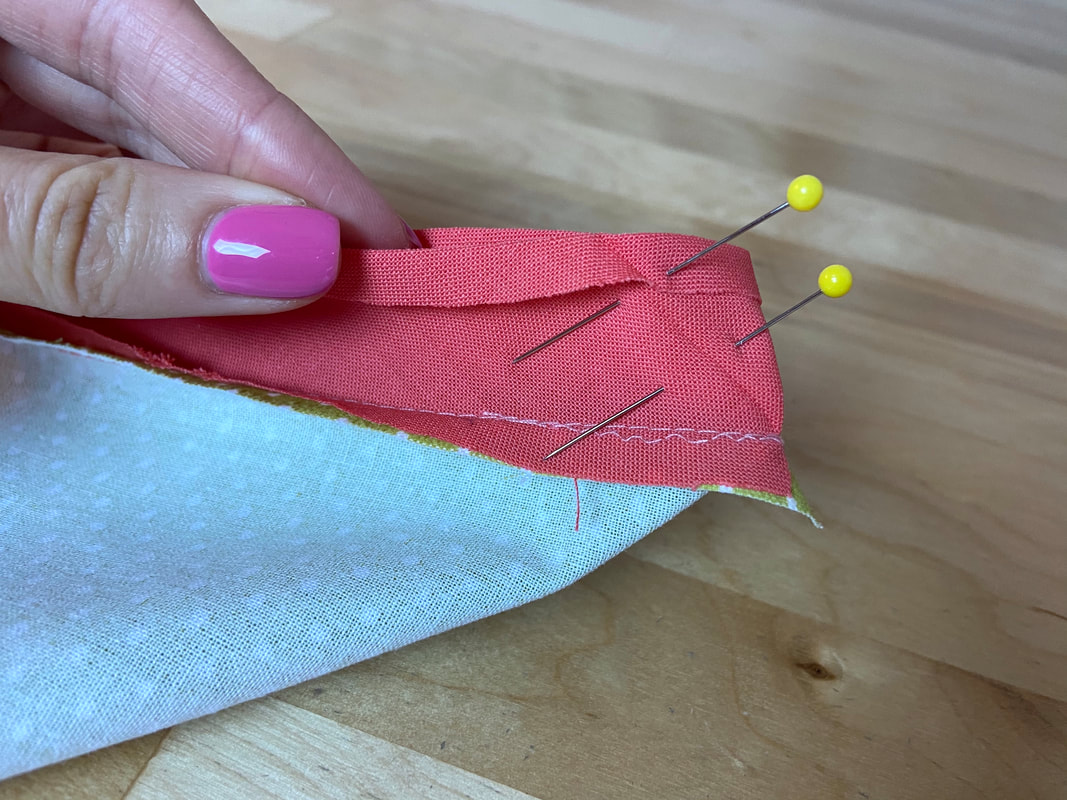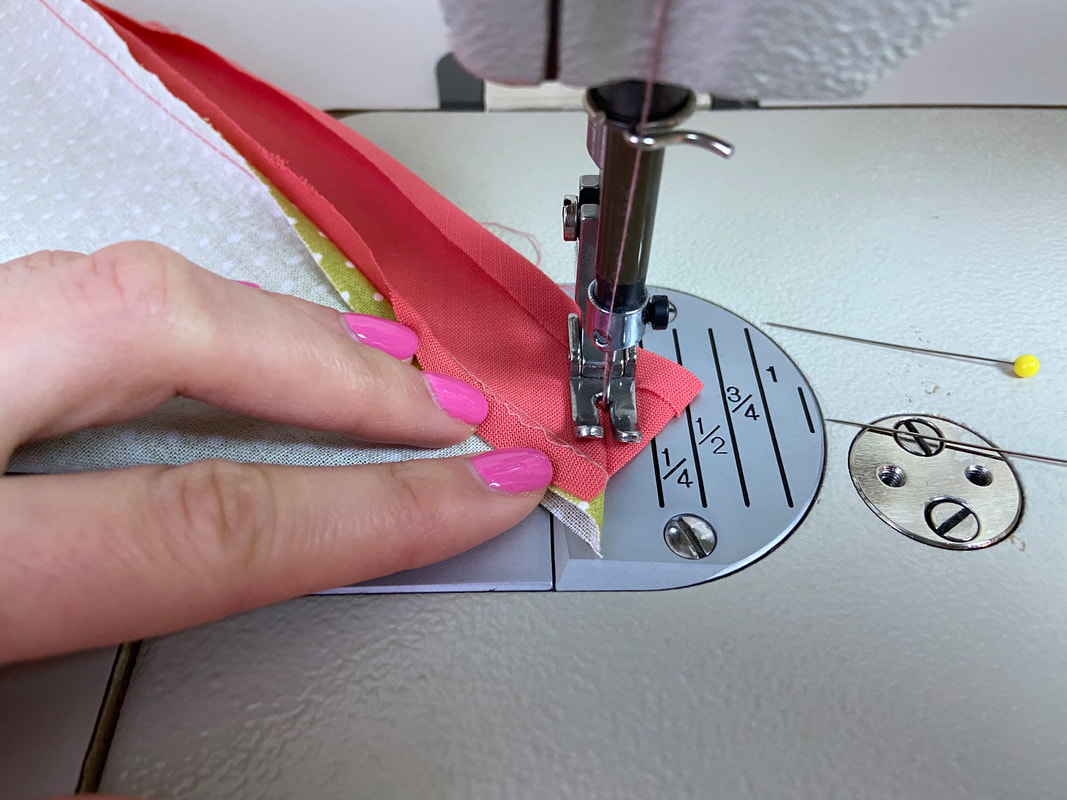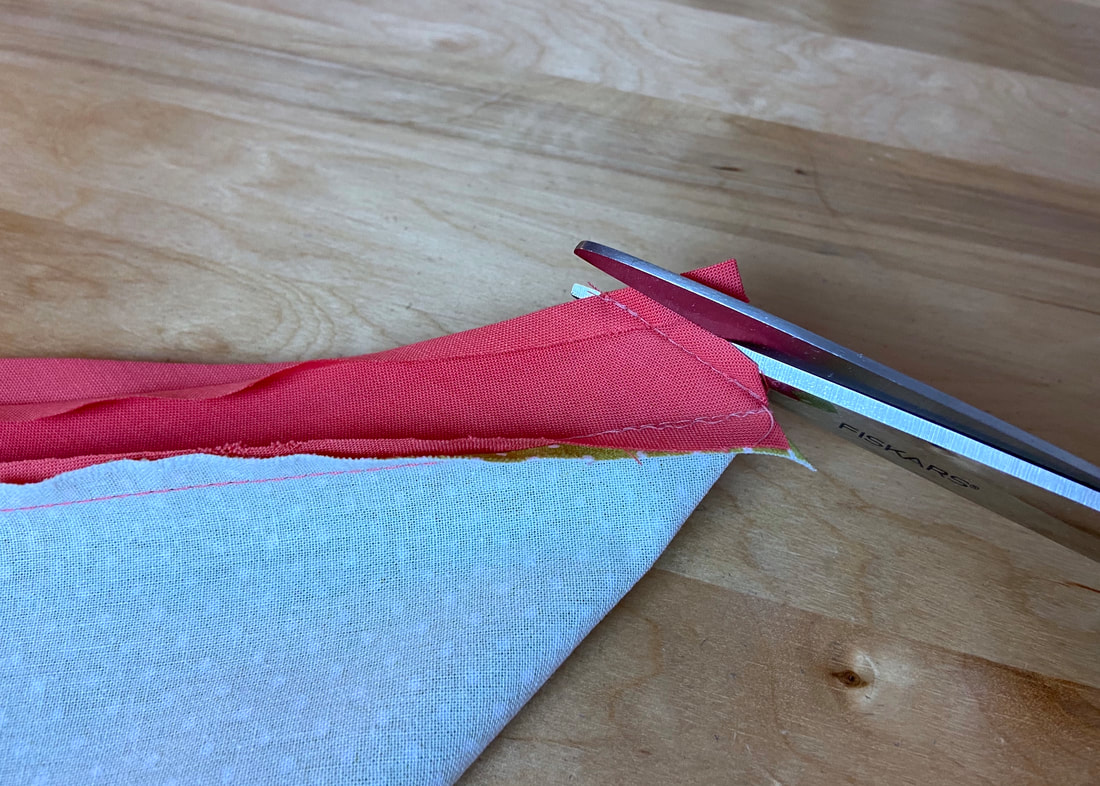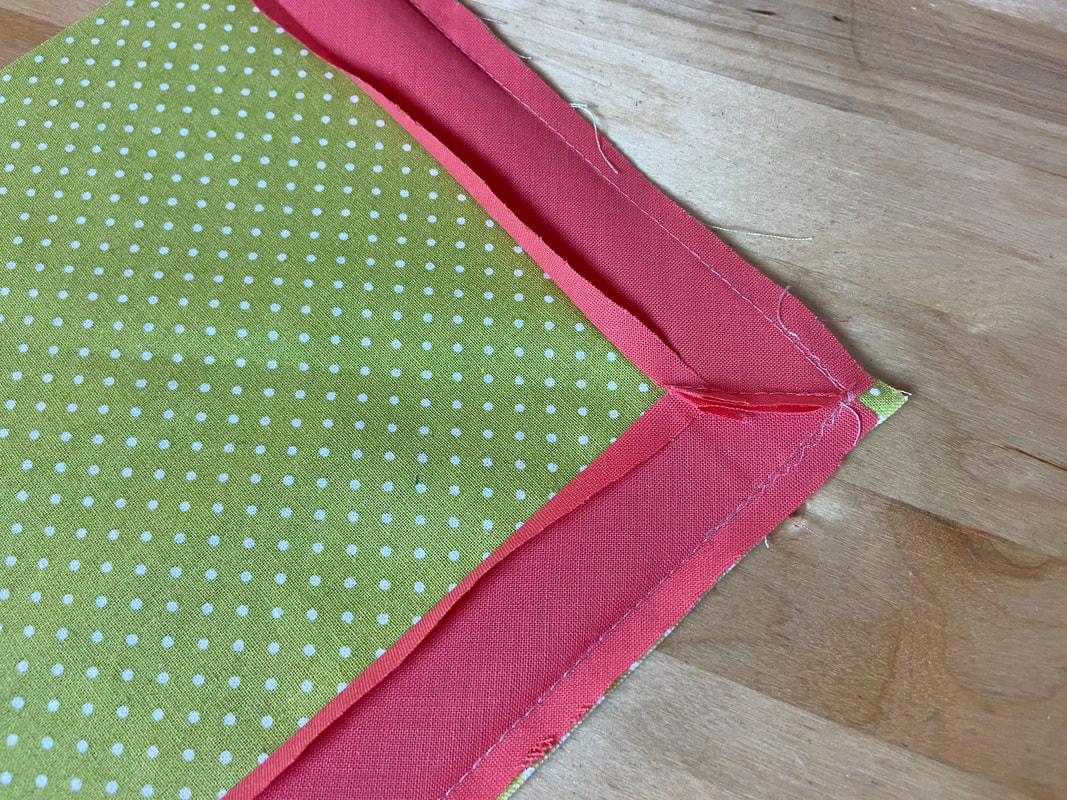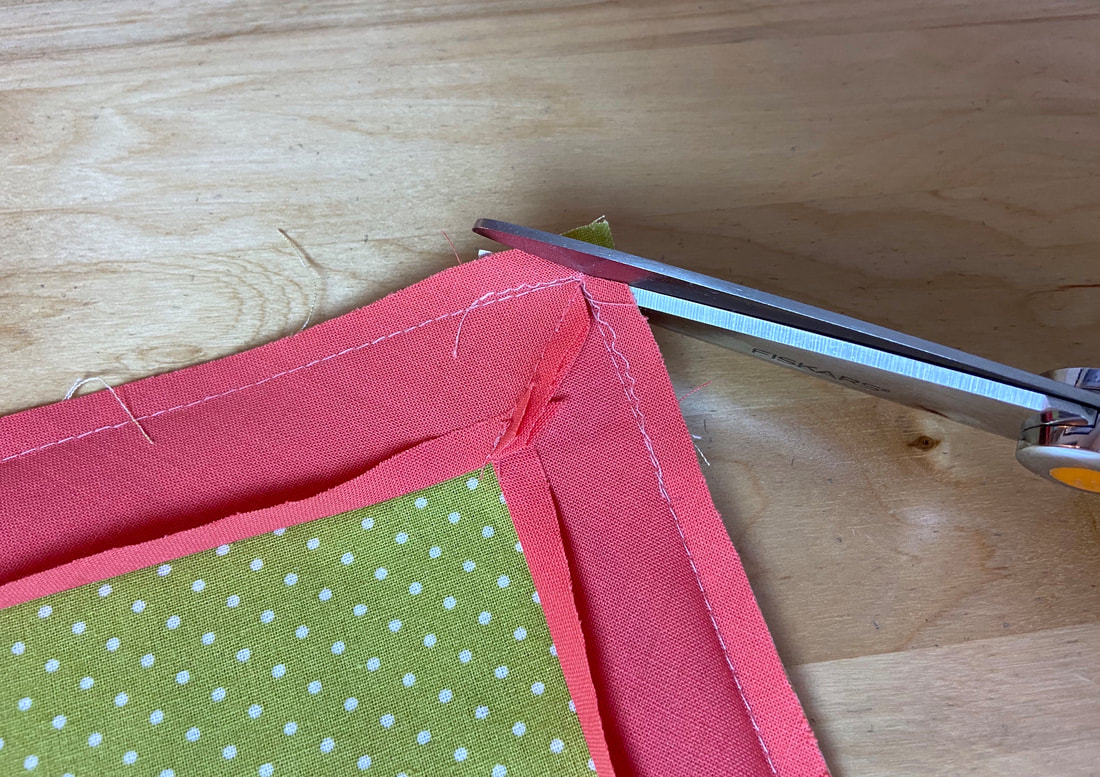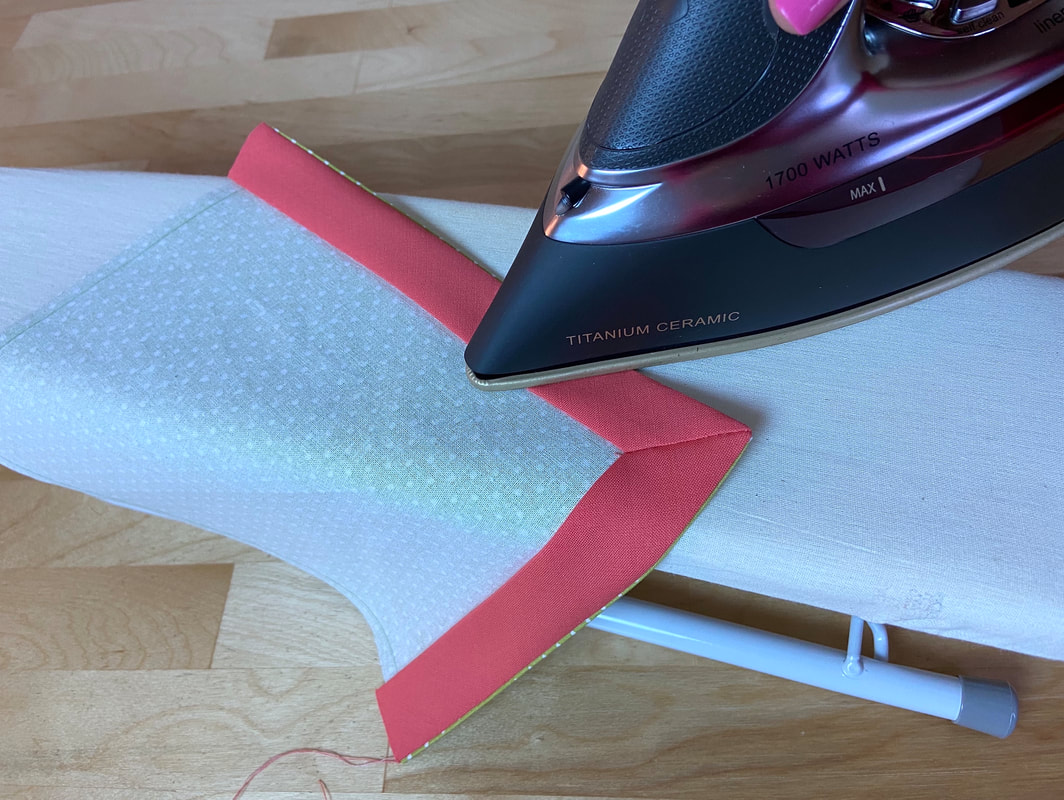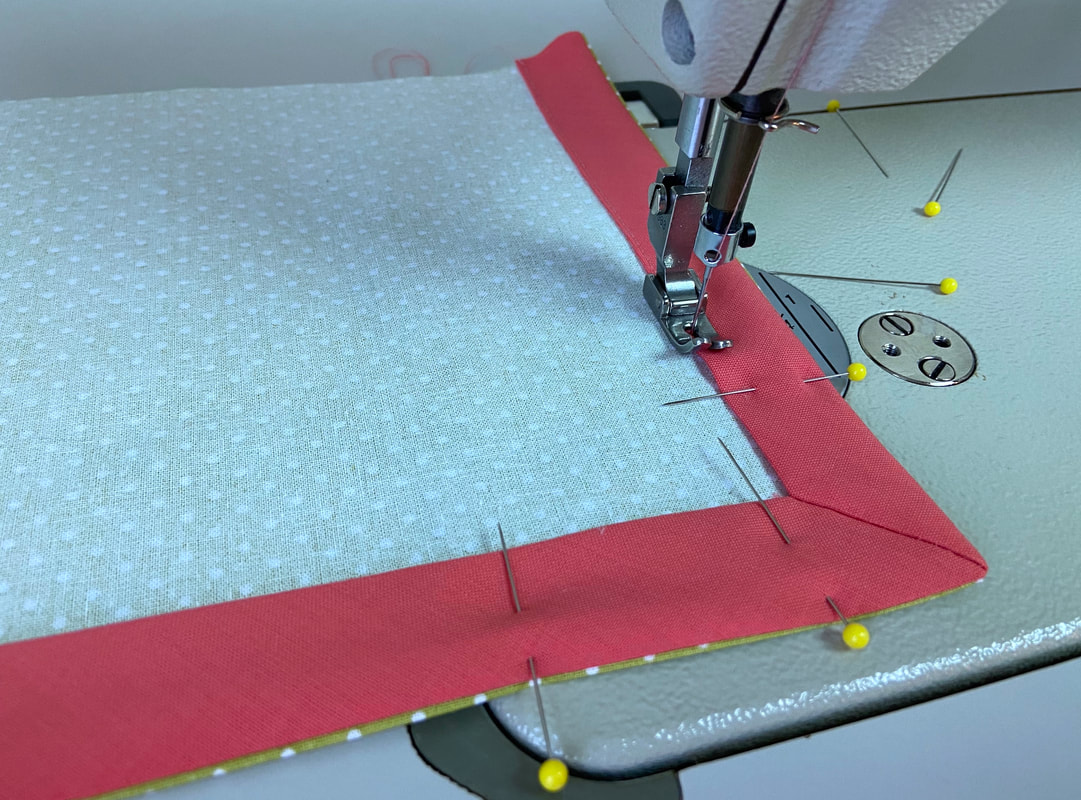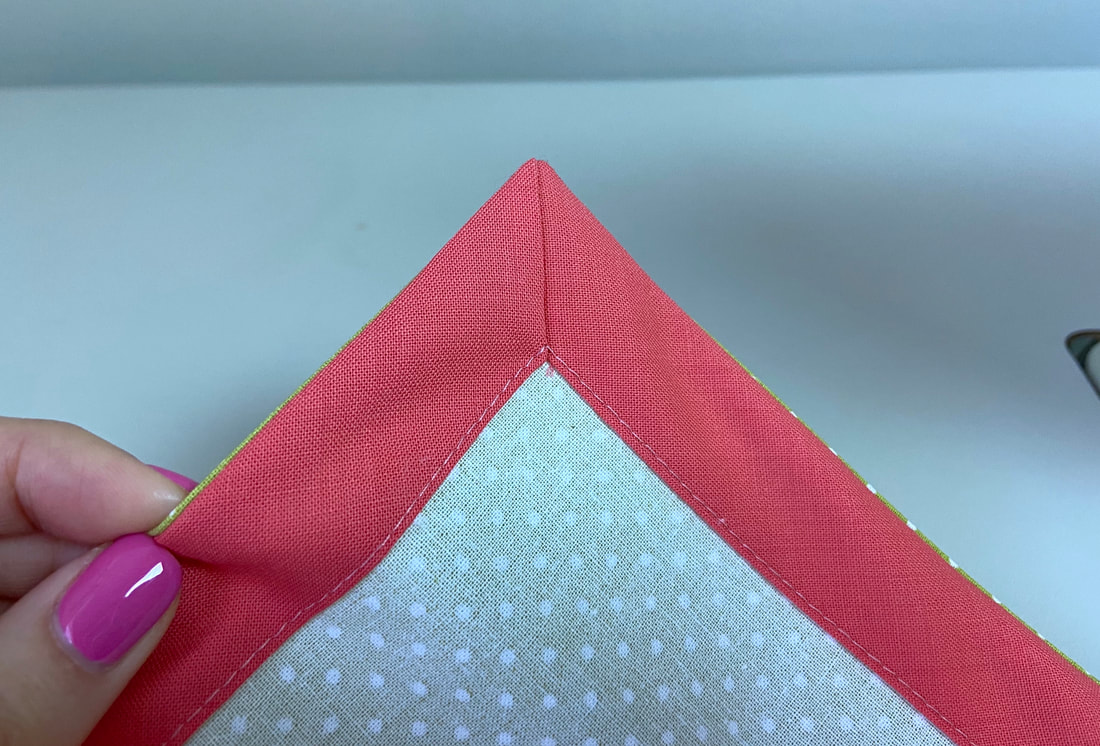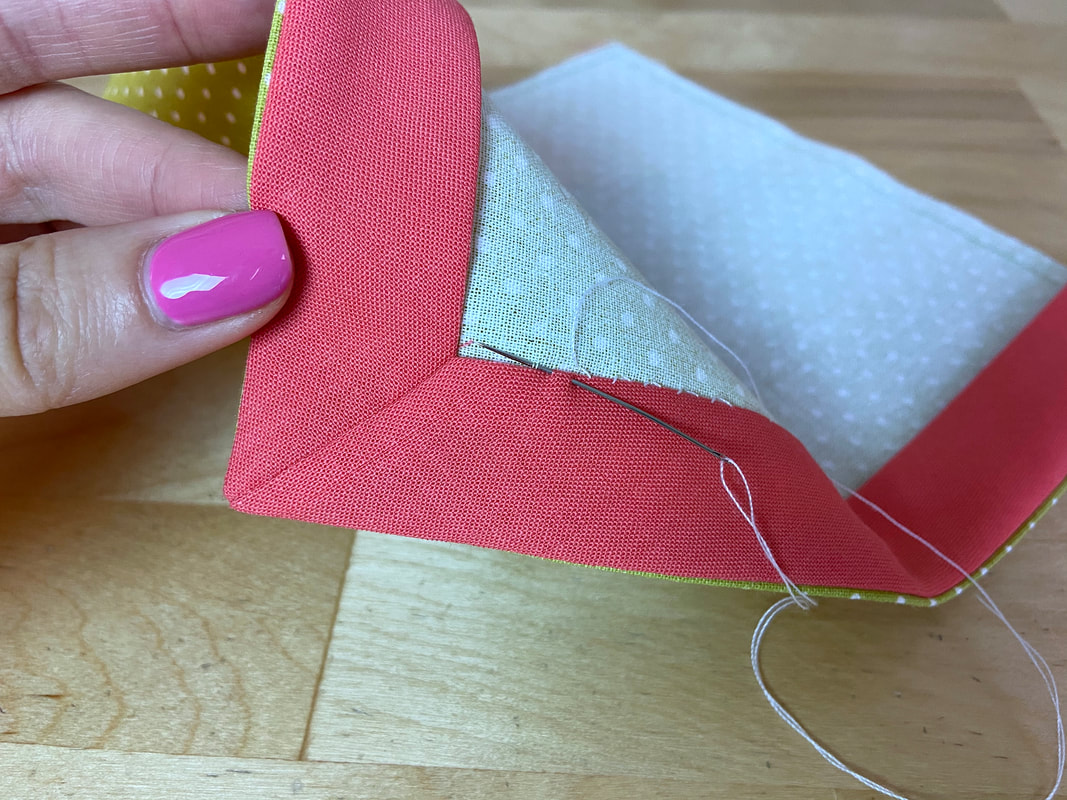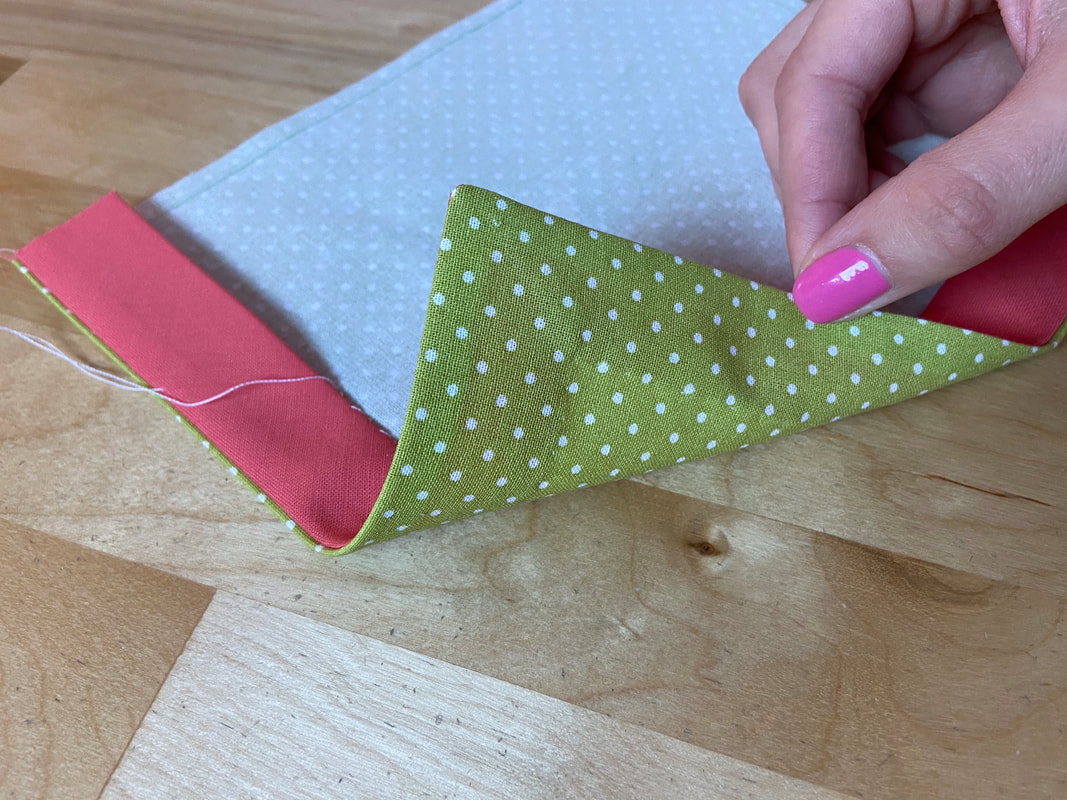Mitering a corner with bias facing (or bias strip) is one of the most common techniques used on garment opening edges that are not faced. This finish provides a perfect cross between casual and dressy.
1. To complete this mitered corner finish, cut a bias fabric strip measuring the width of 1 ½” or 2”. In this example, the 1 ½” width is used.
To cut the 1 ½” fabric strips on the bias follow the steps described in this tutorial: How To Sew Continuous Bias Binding
If finishing a long edge, sew a continuous bias strip.
2. Fold and iron both lengthwise edges at ¼” towards the wrong side of the bias fabric strip as shown.
3. Trim the garment’s lengthwise (vertical) and crosswise (horizontal) seam allowances down to ¼”.
Note: If working with thick/bulky fabric, use a 2”-wide bias strip and fold its lengthwise edges at ½”. Trim the garment’s intersecting vertical and horizontal seam allowances down to ½” (if not already ½”).
4. Unfold one of the bias facing edges and align this cut edge to the vertical garment edge. The face sides of both garment and bias facing should be touching as shown. Insert pins perpendicularly to keep the bias strip aligned.
5. When arriving at the crossing vertical and horizontal seamlines (at the corner) mark this point on the bias strip as shown. To mark, use tailor’s chalk or a fabric pencil.
6. Machine stitch the bias strip layer (only) about a 1” length on both sides of the point marked in Step 5. Follow the fold line as a guide.
7. Clip the bias strip from the cut edge to the point, being careful not to cut through the stitching.
8. Continue aligning the bias strip to the garment’s horizontal edge (hem). The slash should align with the garment’s corner and provide a flexible transition from the vertical edge to the horizontal edge.
You should notice the bias strip gathering some excess within the corner.
Use hand basting to keep the edges aligned perfectly in the stitching process to follow.
9. Machine stitch the bias facing strip to the garment edge. Start by stitching down the vertical lengthwise edge and pivot to the horizontal, bottom edge.
Remove the temporary hand basting at this point.
10. Now let’s handle the excess at the corner: Fold the excess toward one of the garment edges, such that the bias facing lays completely flat.
11. Iron the folded bias strip in this position.
12. Pull bias strip's folded excess away from the garment layer, pin and stitch diagonally following the crease line left in Step 11 above.
13. Trim the excess down to ¼” and iron the seam allowance layers open.
To eliminate additional bulk, trim the garment corner excess as needed.
14. Flip the bias facing towards the garment's wrong side to enclose the corner’s raw edges. Iron the finished vertical and horizontal edges.
Last but not least, clean finish the unstitched bias facing edges using the method of your choice.
In this case, the already-folded edges are machine topstitched.
If you prefer an invisible finish, use a hand slipstitch instead.
Follow the steps in this tutorial to learn how to slipstitch: Hand-Applied Blind Stitches

